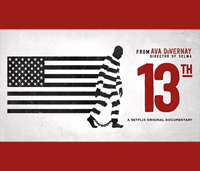News & Commentary
International Reactions to Ava DuVernay’s Documentary, 13th
From Despair to hope: the outrageous portrait of a society, drawn by Ava DuVernay
After watching Ava DuVernay’s documentary, 13th, my first thought was “I don’t want to get out of this building, I don’t want to be in those streets where my identity, my fate has already been decided years ago”. Fear and despair.
Don’t think that I am naïve, I am aware of the situation for Black People in the US and beyond. I am a French-Caribbean woman. And what brought me to the US, and to the ACLU, is my love for social justice and my desire to help underprivileged communities gain the equal rights and protections that they have been denied for hun
By Lukasz Niparko, Julie Vainqueur

Death is Back in Ohio
Wednesday, September the 13th, marks the second execution to take its place in the State of Ohio following a three year rupture after Governor John Kasich launched a moratorium on executions, subsequent to the torturous effects of the lethal concoction of midazolam and hydromorphone used in the execution of Dennis McGuire on January 16th, 2014. McGuire‘s botched execution should be a caution to every state that takes on the role of ‘hangman’. and becomes responsible for inflicting unnecessary conditions surrounding the execution that violate the Eight Amendment. After all, McGuire’s execution was a clear sign of how inhumane and cruel capital punishment truly is.
By Lukasz Niparko

Stay Informed
Sign up to be the first to hear about how to take action.
By completing this form, I agree to receive occasional emails per the terms of the ACLU’s privacy statement.
By completing this form, I agree to receive occasional emails per the terms of the ACLU’s privacy statement.





